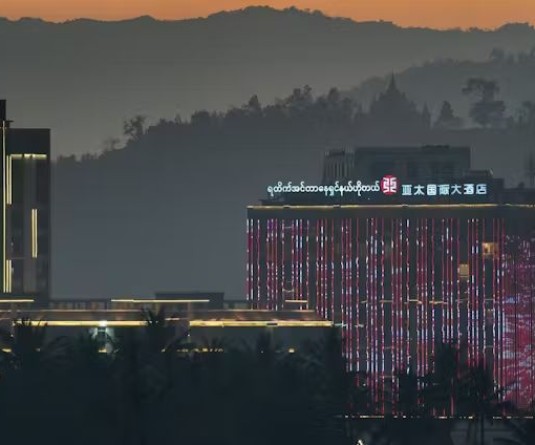
Dolly Kikon
The campaign for unifying different administrative units of the Northeastern states inhabited by Nagas has generated ardent critics and supporters. This issue remains one of the most contentious topics in the negotiations between the National Socialist Council of Nagalim (Isaac-Muivah) (NSCN-IM) and the Government of India (GOI). In January 2006, Th. Muivah, the general secretary of the NSCN-IM threatened to “go back to arms”. He agreed at the eleventh hour to extend the ceasefire with a condition that the goi should be willing to sit down and talk about more concrete issues. The present ceasefire agreement ends on July 31, 2006. Muivah’s message is clear: the unification of Naga-inhabited areas cannot be compromised, and if the goi fails to engage with this, the talks might as well be called off. Surely, the claim for a single administrative Naga unit is a popular demand, which elicits passionate responses from all parties concerned. Thus, it is important for the Nagas to share their notions of this unified homeland, its historical context and more importantly how they plan to negotiate issues of citizenship, minority rights, indigenous people, resources and rights of women.
No doubt there are uncertainties around the Naga unification issue regarding how one can transcend impediments created by existing legal structures. There are debates among various Naga groups, communities and individuals in search of politically correct terms to further strengthen, network and mobilise Nagas who are territorially divided into separate states. The search for an appropriate language and correct terminology is an interesting phenomenon in itself. Is it Naga “unification” or “integration”? While these terms have been used interchangeably over the last nine years since the 1997 Indo-Naga peace process took off, there are deeper, nuanced arguments against the idea of integrating with the present federal unit of Nagaland, which many Naga activists feel is a legal and ethical trap that would end up replicating the skullduggery of counter-insurgency politics that created the state of Nagaland in the first place.
However, it is not easy to transcend elements of political and legal identities, which are linked to governments and states. Can one argue that the Nagas of Manipur are Manipuris and the Nagas in Assam are Assamese? Many would vehemently oppose such terms and state that the Nagas from Manipur or Assam remain Nagas. However, in reality, legal complexities and territorial frameworks operate in a different manner. Even though the Nagas have a Naga ‘national’ identity, in their daily lives they have to function within the existing politico-legal framework which is imposed by the state and the federal unit within which they live. For instance, a Naga person living in Karbi Anglong district of Assam would have to deal with the local administration on issues pertaining to her/his life in a manner that may not reflect her/his Naga national aspirations. Assam is one of the states where the goi’s 73rd Amendment of the Indian Constitution has been affected, allowing for a devolution of powers to rural areas by constituting governmental modes of local administration which have no bearings on traditional systems. Thus, a Naga would find herself/himself being answerable to a local panchayat instead of the traditional Naga customary authority.
On the other hand, in Manipur, the hills where a majority of the Nagas live, they are administered by special laws that allow them to apply their customary laws — something they might not enjoy much longer — even as the government tries to impose a municipality law in the hills.
The Nagas have realised that it is important for them to transcend these imposed legal identities. A Naga activist says: “I have to transcend the identity of a Naga from Nagaland and to that of a Naga from, if I may say, Nagalim… so that the unification of the Naga areas becomes more of a reality when we also, at our psychological, emotional and day-to-day level, are able to transcend the state identities.” But in reality, the politics of territoriality and identity comes into play. Thus, when a friend from Nagaland got into an elite branch of the civil services in 2005, there were speculations if she was the first Naga woman to join the service. It was later found that there was a Thangkhul Naga woman who had joined before. But some bureaucrat told my friend that she was still the ‘first’ Naga woman since she is from Nagaland. Such absurdities pass off everyday politics of being ‘Nagaland Nagas’ and scoring brownie points in a facile debate on statehood and Naga identity.
It is pertinent to remember that after the formation of the state of Nagaland in 1963, many Nagaland Nagas who comprised the elites and formed the government, suffered from ‘selective’ amnesia on the politics of the formation of the federal unit of Nagaland, until electoral politics became heavily influenced by the Naga unification demands after 1997. Issues of representation have become a central rallying point in the Naga peace process. Even though the state government is involved as a facilitator between the nscn and the goi talks, within the state of Nagaland it represents federal interests of the Indian Union and faith in a constitutional process that is not very famous for fostering dialogue. Thus, it is also prone to playing up to its own particular kind of politics.
For instance, the Naga heritage village that was set up near the state capital of Nagaland has many vested interests inscribed in its creation. It is argued that the Naga heritage/model village in Tuophema village, situated in Kohima district, has sent out wrong signals. There are 16 huts symbolically representing each Naga tribe (according to the Nagaland government’s list of Naga tribes). In that process several Naga tribes like the Maos and the Thangkhuls have been conveniently excised from government memory in the village.
It is thus important to go beyond such state politics and engage with a larger civil society in the region. Being stuck in governmental notions of identity and territorial sanctity is counter-productive to say the least. There are multiple claims to homelands by different peoples and nationalities that inhabit the so-called Northeastern region, and it does not follow that they have to be antagonistic to one another. As people who have so many shared memories of human movement, myths and histories, there is every possibility that breaking out of a governmental notion of identity and territory will allow for more dialogue and public debate.
It is possible, as relations between Ahom and Naga villagers along the Indo-Assam border in eastern Assam shows. Such relations, which survive despite the onslaught by the media and government on their existence, persist and mould a shared history of occasional conflict, co-existence and resistance.
So far the idea of a Greater Nagalim has gained currency as sociological and historical shorthand amongst a section of the media, which in turn has been cynically manipulated by a shortsighted political community in order to push several complex issues of justice under the carpet. It is an urgent task to re-introduce justice and dialogue into the discussion, before the immensely complex issues that form the substance of Naga national identity and historical experience, are allowed to slip away in the everyday morass of a territorial politics that few people in the subcontinent would care to engage with.
The writer is a Naga research scholar based in Guwahati
Source: Tehelka






